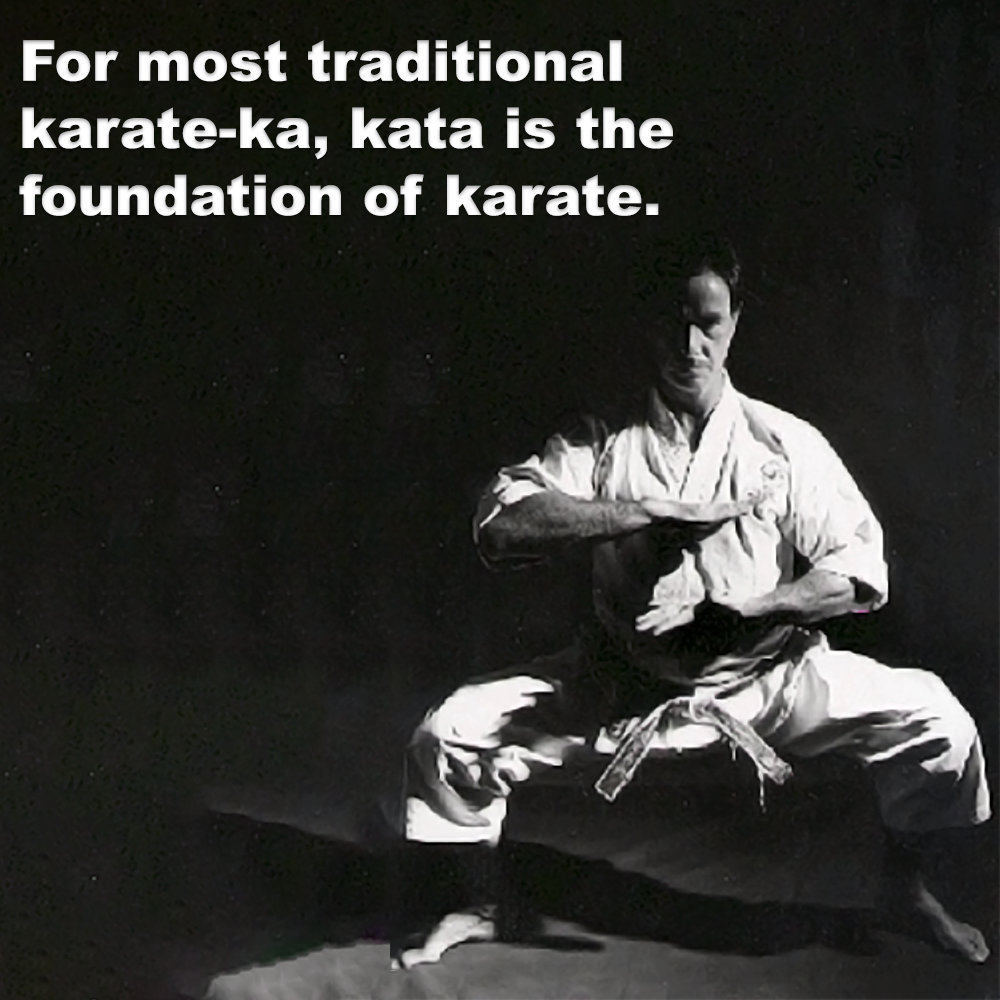
For most traditional karate-ka, kata is the foundation of karate.
Posted by ADAM CARTER on DEC 04, 2022

For most traditional karate-ka, kata is the foundation of karate.
What is the purpose of kata in karate? For most traditional karate-ka, kata is the foundation of karate. But why is that?
The trouble with determining the purpose of kata, is that the purpose you find in kata is directly related to your understanding and your training focus. The key to the purpose of kata is the intent in its practice.
Historically, kata are an encyclopedia of fighting principles and practices which contain a myriad of defensive and offensive techniques, once considered “styles” in themselves that a creator put together to pass down his knowledge.
The magnitude of kata is fairly intense and can be hard to grasp. It takes a great deal of study to understand fully just one. You truly only need two or three kata to be competent, if the kata is truly understood.
“If practiced properly, two or three kata will suffice as ‘your’ kata; all of the others can just be studied as sources of additional knowledge.” - Mabuni Kenwa
But today our systems require us to study more to advance in grade. But as you advance, you should start to see similarities among the kata.
"A student well versed in even one technique will naturally see corresponding points in other techniques. A upper level punch, a lower punch, a front punch and a reverse punch are all essentially the same. Looking over thirty-odd kata, he should be able to see that they are essentially variations on just a handful.” - Funakoshi Gichin
Where we know of a historical connection between kata, it is reasonable to assume common application of common movement.
There are some kata that seem to be more practical than others, perhaps showing that there is some redundancy, variations on variations, different ways of showing the same principle.
The kata are an amazing combative resource, but even having an intuitive grasp of just one kata's methods, requires a basic understanding of actual combat, not the common place “karate-ka on karate-ka” type attacks. You have to know what you are training for, in which context, knowing what makes sense, and what simply does not.
Even if you focus on just one kata for many years, as the old masters did, the objective isn't to just learn the moves of that kata by rote. It is to USE the kata…… Lessons should have been learned from extracting drills contained within them, as it was those very drills that were created before the solo representation which we now all perform. You can walk through learning the steps of a kata in a couple of hours, but a deeper study, will take significantly longer, especially if you don't have someone to guide you. Some practitioners and instructors are ignorant of this and therefore don't bother trying to grasp the deeper meaning, citing incorrectly, that they don’t teach you how to fight.
Kata are really just sequences of movements, and movements can do a wide variety of things. The purpose of any given movement is entirely dependent upon the will of the person performing the movement. Kata is not an arbitrary collection of techniques, it is structured in a way to give you progression and development - a road map through your own evolution. Remember though that you will only benefit from what you believe there is to benefit from.
With thanks to Iain Abernethy
